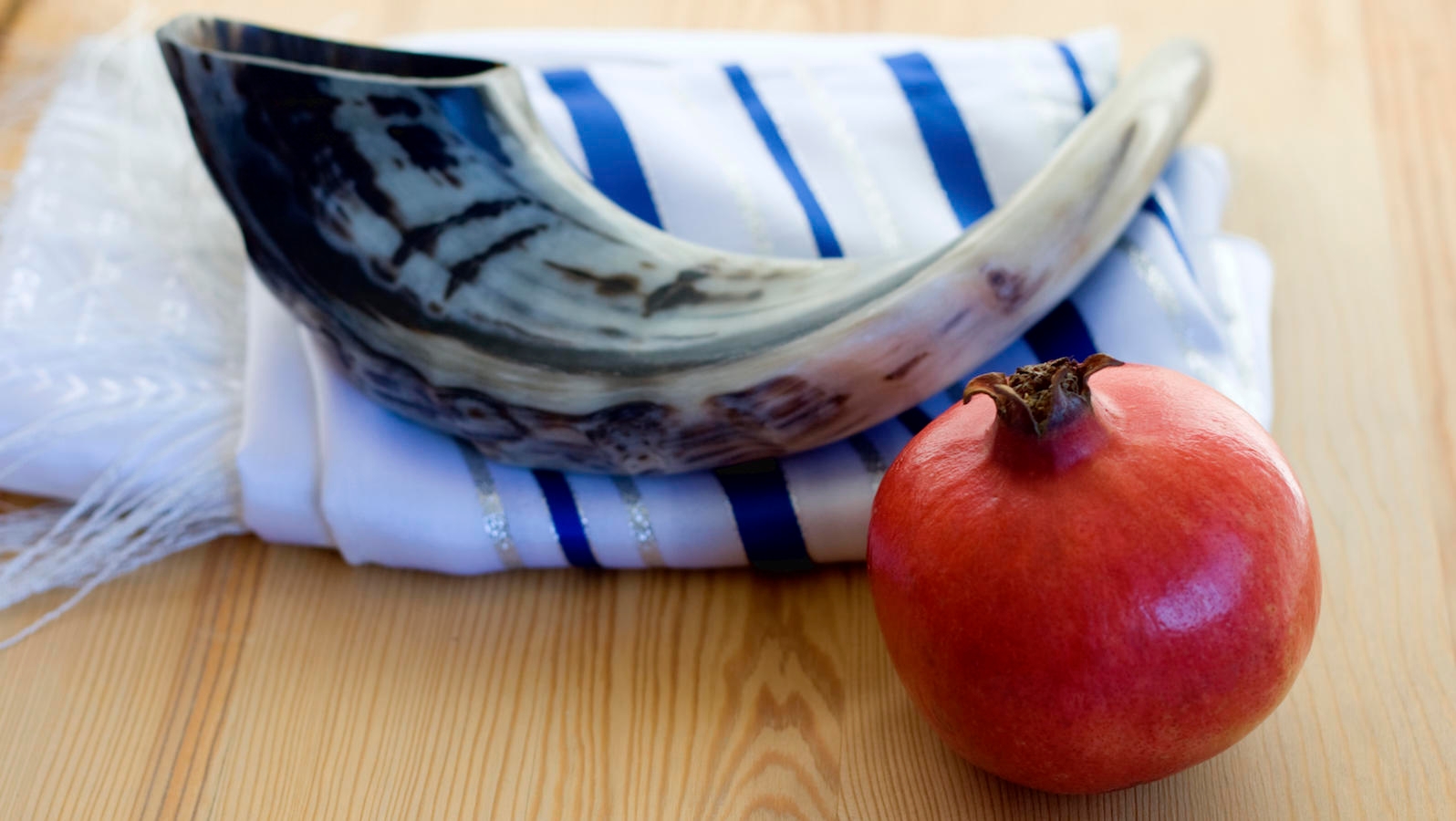Although the High Holidays — the two days of Rosh Hashanah (the Jewish New Year) and Yom Kippur (the Day of Atonement) — occupy three days only, they lie within a web of liturgy and customs that extend from the beginning of the preceding Hebrew month of Elul through . The focus of this entire period is the process of teshuvah, or repentance, whereby a Jew admits to sins, asks for forgiveness, and resolves not to repeat the sins. Recognizing the psychological difficulty of self-examination and personal change, the rabbis instituted a 40-day period whose intensity spirals toward its culmination on Yom Kippur, a day devoted entirely to fasting and repentance.
When Does the High Holidays Season Begin?
The High Holiday period begins on the first day of the Jewish month of Elul. In the tradition, during this month of soul searching, the shofar, or ram’s horn, is blown each morning except on the Sabbath, to call upon listeners to begin the difficult process of repentance. Also in special haftarot — prophetic portions — focusing on consolation acknowledge the vulnerability of an individual grappling with personal change. During the week before , intensity increases as traditional Jews begin reciting selichot, prayers that involve confessing sins and requesting God’s forgiveness and help. On the Sabbath before Rosh Hashanah, the selichot are chanted at midnight, rather than their usual early morning hour.
What Are the 10 Days of Repentance?
The culmination of the High Holiday period occurs during the Ten Days of Repentance, which begin on 1 with Rosh Hashanah and end with Yom Kippur. During this period, human beings have the chance to tip the scales of divine judgment in their favor through repentance, prayer, and tzedakah (performing righteous deeds and giving money to charitable causes).
Not only is Rosh Hashanah the Jewish New Year, which commemorates God’s creation of the world, but also the Day of Judgment, when God remembers and judges all human deeds. Except on , services are punctuated with the call of the shofar, which according to Maimonides, is saying, “Awake, you sleepers, from your slumber…examine your deeds, return in repentance, and remember your Creator.” Human beings are believed to be in mortal danger at this time, with their lives hinging on the decision to repent. Only those who choose to forego sin are inscribed in the symbolic “book of life” that is a central liturgical image of Rosh Hashanah.

Help us keep Jewish knowledge accessible to millions of people around the world.
Your donation to My Jewish Learning fuels endless journeys of Jewish discovery. With your help, My Jewish Learning can continue to provide nonstop opportunities for learning, connection and growth.
On the afternoon of the first day of Rosh Hashanah, the theological bent of the morning services is reinforced in a concrete way during the Tashlikh ceremony, during which individuals symbolically cast away their personal sins by throwing breadcrumbs into a flowing body of water. This action is accompanied by the recitation of biblical verses that evoke the human capacity for repentance and the beneficence of divine forgiveness through the metaphor of casting sins into depths of the waters.
What is Shabbat Shuvah, and What Happens on Yom Kippur?
The Sabbath between Rosh Hashanah and Yom Kippur is called Shabbat Shuvah, the Sabbath of Return (or Repentance), after a verse from the haftarah declaring “Return O Israel to the Lord, your God” (Hosea 14:2).
The transition to Yom Kippur begins the in the hours preceding the evening onset of the festival with the recitation of the first viddui, or communal confession of sins, at the afternoon service. Some Jews choose to go to the mikveh, or ritual bath, to purify themselves before the holiday. The striving toward inner purity is also reflected in the white outfits traditional for the day. In traditional congregations, men will don a white robe called a kittel over their holiday clothes. In some liberal congregation, both men and women might choose to wear white garments to symbolize this quest for spiritual purity.
Within the Ten Days of Repentance, Yom Kippur is the pinnacle of intensity, moving toward the decisive moment at its close when God is imagined as sealing the books of life and death. The day’s total focus on spiritual concerns is exemplified by fasting and abstaining from everyday activities such as bathing, sexual relations, and the wearing of leather shoes.
The day of Yom Kippur, also known as the Sabbath of Sabbaths, begins with the Kol Nidre service immediately prior to sunset. The heartrending poems and prayers of the Machzor, the prayer book used for Rosh Hashanah and Yom Kippur, which express the themes of repentance, human frailty, and humility before God, combine with the nusah, or musical style of the service, to express the momentousness of the day.
Liturgical elements that distinguish the Yom Kippur services include a recounting of the Temple service on Yom Kippur, a description of the suffering of rabbis martyred by the Romans, and the reading of the Book of Jonah. The day closes with the Neilah service, during which penitents pray before the open ark, with one last chance to repent before the book of life is sealed. The very name of the service, Neilah (locking), refers to the imagery that the gates of repentance, open during the High Holidays, are now shutting. A lengthy sounding of the shofar, called a tekiah gedolah, releases the Jew back into the realm of the everyday bolstered by a final echo of the call to repentance.



